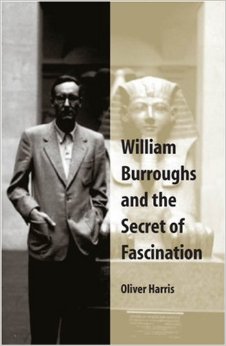 William Burroughs and the Secret of Fascination
William Burroughs and the Secret of Fascination
by Oliver Harris
Southern Illinois University Press
287 pages, $45.
FOR ALL the macho swagger of Jack Kerouac and Neal Cassady, particularly in Kerouac’s 1957 novel On the Road, there was a decidedly queer core to the group of writers known as the Beat Generation. Given their rejection of American values, it made sense that they were open to exploring the margins of sexual identity.
While Kerouac’s own explorations in that arena were somewhat secretive and understated, Allen Ginsberg and William Burroughs aligned themselves unambiguously with gay sexuality. In William Burroughs and the Secret of Fascination, a critical study of Burroughs’s early writings, Oliver Harris attempts to map out new critical territory around the career of this unique writer. Harris examines the ramifications of Burroughs’s sexuality, but his project in this study is more than merely a queer reading of Burroughs’s work.
Harris’s book is not for the casual reader. This is a scholarly work that stakes a serious claim toward advancing the body of criticism devoted to explicating not only Burroughs’s writings, but his complex identity as a writer and a cultural figure. In taking on this project, Harris quotes amply from existing Burroughs scholarship and puts forth a complex argument that presupposes a knowledge of such seminal critical theorists as Walter Benjamin, Jacques Lacan, Maurice Blanchot, and Guy Debord, among others. It’s not an easy book to read, but for those who share Harris’s “fascination” with Burroughs, it’s an important one.
From the outset, Harris tries to explain that his interest in Burroughs is deeply personal. His deliberately enigmatic title for this study complements the mysterious nature of his subject—Harris acknowledges that his own obsession with Burroughs is as much the focus of his investigation as is Burroughs himself. Like the Cheshire cat in Alice in Wonderland, Burroughs’s haunting smile, his undeniably mysterious authorial presence, bedevils Harris and drives him ever further in his investigations. In his preface to the book (a space typically reserved for mundane lists of acknowledgments), Harris points out some of the deeply personal motives that propelled him in his quest to understand Burroughs, and that confirmed for him the strange hold (he refers to it as a “seduction”) that Burroughs has upon his readership.
Harris is at peace with the realization that his fascination with Burroughs is as much with the writer’s persona as with his works. He characterizes his study as an attempt, first, to “clarify something vital that was formerly mystified” and, second, almost paradoxically, to arrive at “something commensurate with the very perplexity that captured my interest in the first place.”
In examining Burroughs, Harris restricts himself to what he refers to as the 1950’s-era trilogy that ultimately inspired and formed the foundation for Burroughs’s 1959 novel Naked Lunch, which is widely regarded as his masterpiece. These three works are Junkie (1953), Queer (written in 1952 but published in 1985), and the writings that became The Yage Letters (1963). According to Harris, previous critical approaches to Burroughs have placed too much emphasis on his identity as an addict. Burroughs was addicted to heroin, used a wide array of drugs, and cultivated an outlaw persona throughout most of his life (a persona fueled by the legendary story of how Burroughs shot and killed his wife). Harris also maintains that critics have failed to recognize the importance of Queer, and of Burroughs’s correspondence with Allen Ginsberg, in the genesis of Naked Lunch.
Harris is careful to point out that his dissatisfaction with previous scholarship on Burroughs does not amount to a case of “I get Burroughs and you don’t.” He recognizes, and quotes amply from, previous studies of the Beat writer, but he maintains that most of them simply don’t go far enough. In Harris’s view, the predominant critical paradigm of addiction as it relates to Burroughs’s work falls short because of its limited definition of “control.” “Control and its terrors are present rather than represented in this writing, produced by as much as reproduced in it,” he writes.
The bulk of this study is devoted to a detailed examination of each of the three pieces of the 1950’s trilogy, an examination that delves into questions of form as well as content. Harris acknowledges that his map of the Burroughs oeuvre, with Naked Lunch as the focal point, is “deeply unfashionable,” critically speaking. But he provides an illuminating study of the early Burroughs and of Naked Lunch, and makes good on his promise to enter uncharted critical territory. This investigation and reading of Burroughs’s early career stands as a useful challenge to previous critical work on this most unusual writer.
Jim Nawrocki, a frequent contibutor to this journal, has also written for in The Bay Area Reporter, New Art Examiner, and Mavin. He lives in San Francisco.





